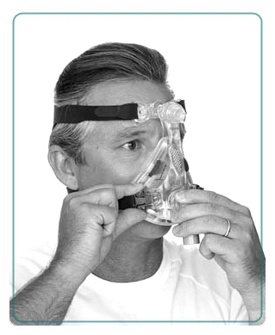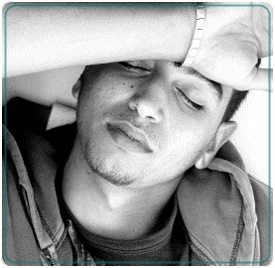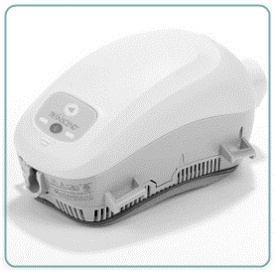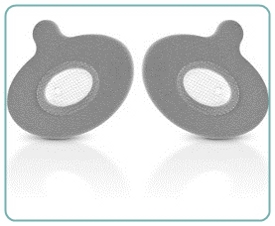Changing Seasons & COPD
This blog post was written by Joanna Murray.
 It amazes me how things can change with the blink of an eye when it comes to COPD. There were times when my mom could almost do summersaults and dance across the room, and then there were times when she was down for the count and couldn't move. Any effort to move was just too much for her. Her breathing would become labored and her lung function decreased and became difficult to control.
It amazes me how things can change with the blink of an eye when it comes to COPD. There were times when my mom could almost do summersaults and dance across the room, and then there were times when she was down for the count and couldn't move. Any effort to move was just too much for her. Her breathing would become labored and her lung function decreased and became difficult to control.
I remember times when Mom would come over to my house and help me clean. She was amazing! I had more energy than she did, but she would always out-do me every time. She didn't want her illness to get her down. No matter what, when I needed her, she was there with bells on.
Now that it's been almost seven months since Mom's death, I can really sit back and take a hard look at her illness. My mom became a daily part of my life. I did a lot for her and vice versa. Even if she was having trouble breathing- if it came down to her spending time with her grandkids or staying home, she would choose her grandkids.
Seasonal COPD was the hardest for her and our family. When the seasons changed, she would get asthma that would eventually turn into bronchitis, and then she would end up with pneumonia. She would be hospitalized sometimes four to six times a year. Anyone that has COPD or is a caregiver can understand this.
When taking care of Mom, some of the things that I noticed during seasonal changes were that she had more of an issue with her lung capabilities with both the outdoor climates as well as the temperature of the house. A fall or rise in either one of these could drastically change her need for oxygen. During the cold weather, she was more at risk of getting infections. During the summer months, she would get so over-heated that breathing would be difficult. When she moved in with me the last month of her life, I had central air conditioning. But for her, that was not enough and my husband had to install a portable air conditioner in the window to help keep her room cool.
I noticed over the years that there were certain things that Mom incorporated in her life to help her get through. One thing was she took a daily multivitamin and Vitamin D. She also would have a yearly flu shot. I realize now there were more things my mom could have done in her daily routine to help maintain her oxygen levels. I miss her dearly but am grateful she enjoyed her life.

Turner, Katelyn. (2011, May 13). The Changing Seasons and COPD. [Web log post]. Retrieved September 24, 2013, from http://blog.copdfoundation.org/the-changing-seasons-and-copd.
 It amazes me how things can change with the blink of an eye when it comes to COPD. There were times when my mom could almost do summersaults and dance across the room, and then there were times when she was down for the count and couldn't move. Any effort to move was just too much for her. Her breathing would become labored and her lung function decreased and became difficult to control.
It amazes me how things can change with the blink of an eye when it comes to COPD. There were times when my mom could almost do summersaults and dance across the room, and then there were times when she was down for the count and couldn't move. Any effort to move was just too much for her. Her breathing would become labored and her lung function decreased and became difficult to control.I remember times when Mom would come over to my house and help me clean. She was amazing! I had more energy than she did, but she would always out-do me every time. She didn't want her illness to get her down. No matter what, when I needed her, she was there with bells on.
Now that it's been almost seven months since Mom's death, I can really sit back and take a hard look at her illness. My mom became a daily part of my life. I did a lot for her and vice versa. Even if she was having trouble breathing- if it came down to her spending time with her grandkids or staying home, she would choose her grandkids.
Seasonal COPD was the hardest for her and our family. When the seasons changed, she would get asthma that would eventually turn into bronchitis, and then she would end up with pneumonia. She would be hospitalized sometimes four to six times a year. Anyone that has COPD or is a caregiver can understand this.
When taking care of Mom, some of the things that I noticed during seasonal changes were that she had more of an issue with her lung capabilities with both the outdoor climates as well as the temperature of the house. A fall or rise in either one of these could drastically change her need for oxygen. During the cold weather, she was more at risk of getting infections. During the summer months, she would get so over-heated that breathing would be difficult. When she moved in with me the last month of her life, I had central air conditioning. But for her, that was not enough and my husband had to install a portable air conditioner in the window to help keep her room cool.
I noticed over the years that there were certain things that Mom incorporated in her life to help her get through. One thing was she took a daily multivitamin and Vitamin D. She also would have a yearly flu shot. I realize now there were more things my mom could have done in her daily routine to help maintain her oxygen levels. I miss her dearly but am grateful she enjoyed her life.

Turner, Katelyn. (2011, May 13). The Changing Seasons and COPD. [Web log post]. Retrieved September 24, 2013, from http://blog.copdfoundation.org/the-changing-seasons-and-copd.
 What is NY State of Health?
What is NY State of Health?
 The Epworth Sleepiness Scale is widely used in the field of sleep medicine as a subjective measure of a patient's sleepiness. The test is a list of eight situations in which you rate your tendency to become sleepy on a scale of 0 (no chance of dozing) to 3 (high chance of dozing).
The Epworth Sleepiness Scale is widely used in the field of sleep medicine as a subjective measure of a patient's sleepiness. The test is a list of eight situations in which you rate your tendency to become sleepy on a scale of 0 (no chance of dozing) to 3 (high chance of dozing). Until recently, traveling with CPAP meant dedicating an entire bag to your machine, humidifier, mask, and accessories.
Until recently, traveling with CPAP meant dedicating an entire bag to your machine, humidifier, mask, and accessories. A second option for those who don't want the hassle of packing a machine at all is Provent. It utilizes your own breathing to treat your obstructive sleep apnea.
A second option for those who don't want the hassle of packing a machine at all is Provent. It utilizes your own breathing to treat your obstructive sleep apnea.